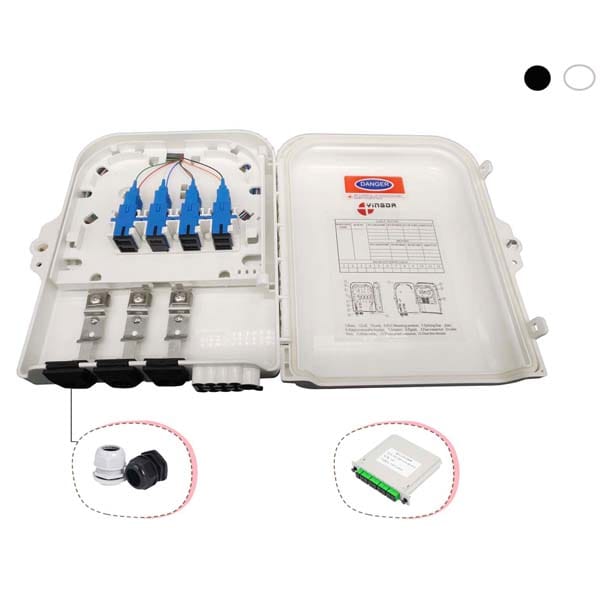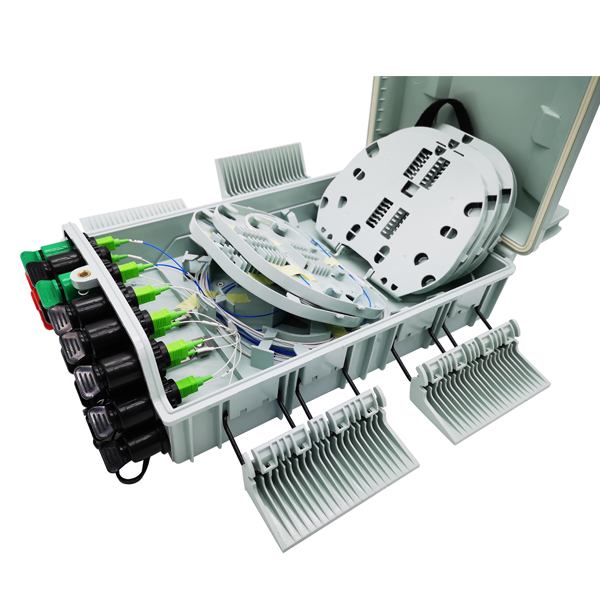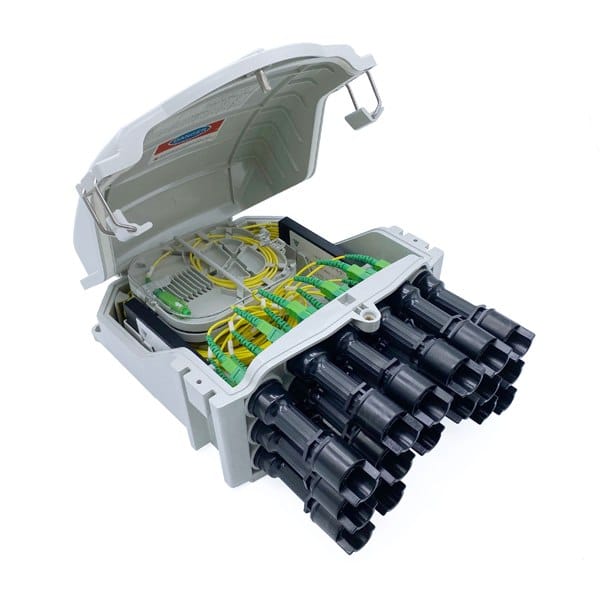PON network is a passive optical network that starts from the optical line terminal (OLT) in the central office (CO), passes through the optical distribution network (ODN), and reaches the optical network unit (ONU) on the user side. The ODN network is located in the middle between the central computer room and the user side, providing optical channels to distribute fibers, protect fibers, connect fibers, and protect connection points.

ODN can be divided into two points and three segments from the central office to the user end, where two points refer to optical distribution points (ODP) and optical access points (OAP); The three sections refer to feeder cable, distribution cable, and drop cable.

In the CO room, the fiber jumper output from the OLT is connected to the ODF patch panel, and the management range of an ODF is the coverage range of this CO room, with fiber management capabilities ranging from 576 cores to 1440 cores.
Through the allocation of ODF, the output cable is transmitted in the pipeline. This section of fiber optic cable is called the feeder cable, and generally are outdoor fiber optic cables. The number of fiber cores ranges from 12 to 144, and can be selected according to needs.
When the distance between ODF and FDT is relatively far, splitting and splice closure (SSC) is usually installed between ODF and FDT for connection.
FDT is used for secondary distribution of the cables, which is the optical distribution point on the ODN network. The management scope of an FDT may be a residential area or a street, managing fiber optic capabilities from 144 cores to 576 cores. Choose the size of FDT based on the number of users it needs to manage.
The section between FDT and FAT is the distribution cable segment, and if the distance is relatively large, SSC will also be installed for splicing. The distribution cable will choose outdoor cable or indoor aluminum core cable according to the configuration of FDT. The number of fiber cores ranges from 12 to 144, which can be selected according to the needs.
FAT is a user access point used to connect distribution cable and drop cable. FAT provides management of 8 to 48 cores and generally covers users in a hallway or a small villa area.
The drop cable refers to the section from FAT to the user’s home. Generally, indoor or outdoor cables are selected according to the location of use. The fiber count is generally single core or dual cores, and there are also a small number of 4-core cable.
TB/ATB is located at the end of the ODN network and is connected to the ONU downstream. The difference between TB/ATB is that TB is an outdoor installation box, while ATB is an indoor installation box. TB/ATB can generally manage single core, dual core, or 4-core.
In ODN networks, there is also an important component called the optical splitter (SPL), which is used to convert one optical input into multiple optical outputs, turning traditional P2P optical transmission networks into P2MP optical networks.
SPL can be flexibly placed in ODF, FDT, SSC, or FAT according to requirements.
Noun Explanation:
- Optical Line Terminal (OLT)
- Optical Distribution Frame (ODF)
- Cable Splicing and Splicing Closure (SSC)
- Fiber Distribution Terminal (FDT)
- Fiber Access Terminal (FAT)
- Indoor Terminal Box ATB (Access Terminal Box)
- Weak current box CTB (Customer Terminal Box)
- Optical Network Unit (ONU)
- Fiber Distribution Box (FDB)
Fiber Termination Box (FTB)- Fiber Optic Splice Closure (FOSC)




